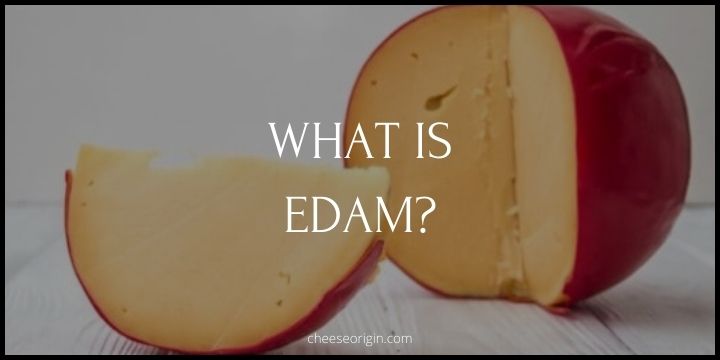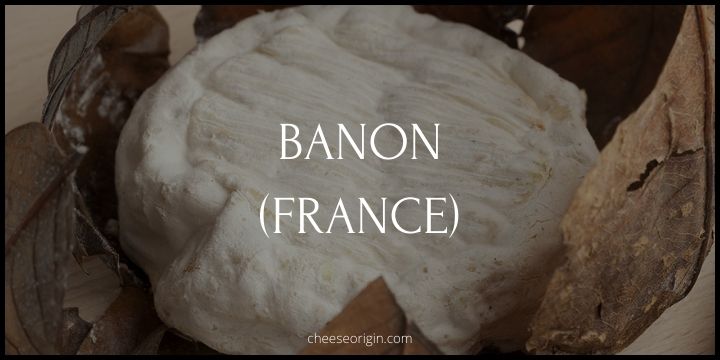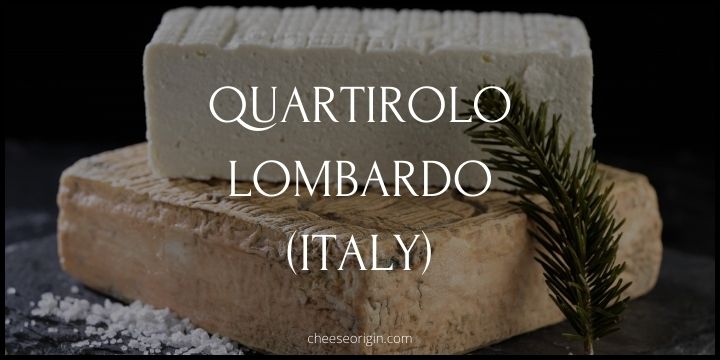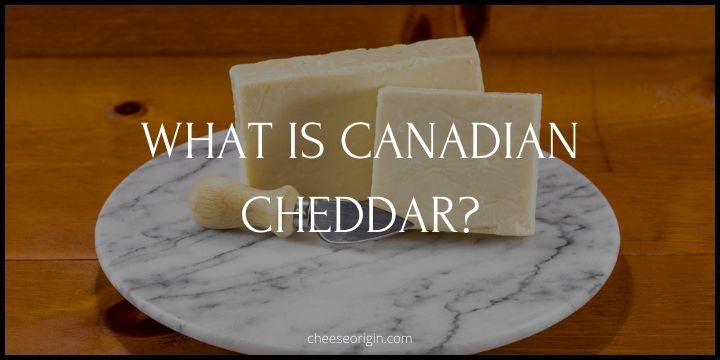What is Colby Cheese? Unveiling the Secrets of this American Original

If you’re a cheese lover, or even just a culinary enthusiast, you’ve undoubtedly come across the name Colby – a favorite among many and an essential part of American cheese history.
Named after the small town in Wisconsin where it was first created, Colby cheese has made its way into the hearts (and onto the plates) of Americans nationwide.
But what makes this cheese so special? Is it its mild, creamy flavor, its distinct orange color, or the fact that it perfectly complements nearly any dish?
In this guide, we will unravel the mystery behind Colby cheese, exploring its origins, unique characteristics, production process, and diverse uses.
Whether you’re a cheese connoisseur or simply someone who appreciates a good slice of cheese on your sandwich, this guide promises to enhance your understanding and appreciation of Colby cheese.
Quick Facts About Colby Cheese
| Fact | Description |
|---|---|
| Origin | United States, specifically Colby, Wisconsin |
| Milk Source | Cow’s milk |
| Texture | Semi-hard, similar to Cheddar but more elastic and moist |
| Flavor | Mild, slightly sweet |
| Color | Typically orange, but can also be white |
| Aging Process | Aged for 1 to 3 months |
| Historical Origins | Colby cheese was first made in 1885 in Colby, Wisconsin by Joseph F. Steinwand |
| Uses | Sandwiches, burgers, cheese trays, grated over dishes |
What is Colby Cheese?
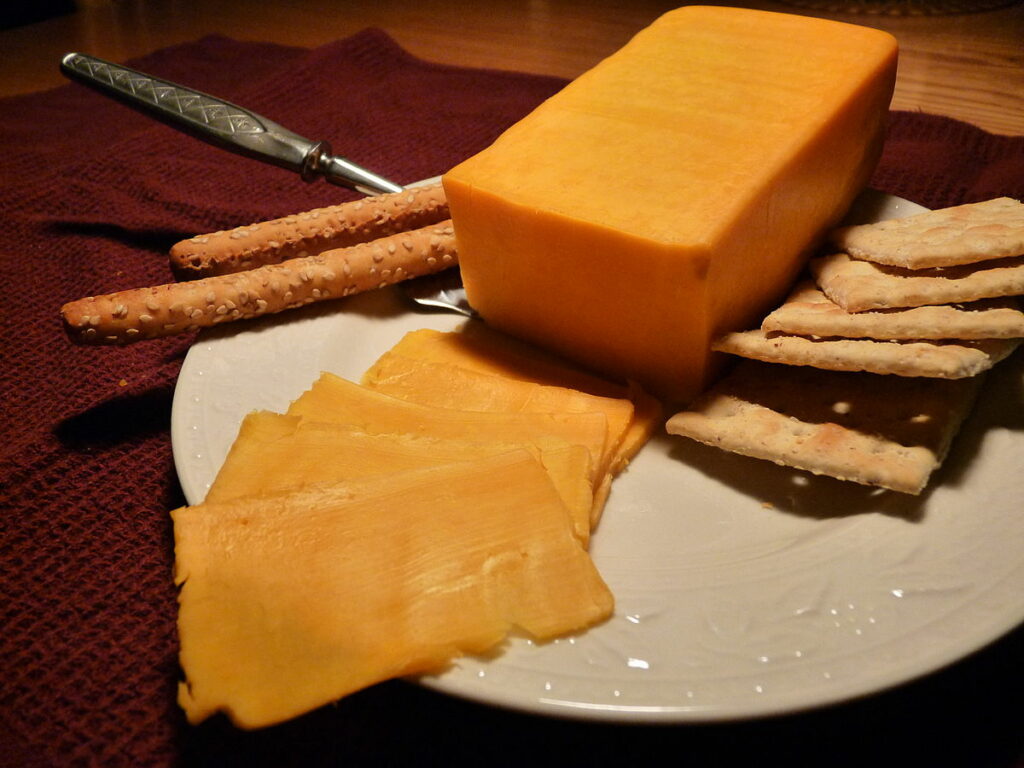
Colby cheese is a type of American cheese that originated in the town of Colby, Wisconsin. It was first made by Joseph F. Steinwand in 1885 and is named after the location of his father’s cheese factory.
Colby cheese is similar to cheddar cheese but does not undergo the cheddaring process. Instead, the curds are washed with cold water in the cheesemaking process, which halts the fermentation of the cheese and results in a milder flavor.
The cheese is typically semi-hard in texture, with a color that ranges from light orange to yellow. It has small, open holes distributed throughout the cheese and a slightly elastic texture.
In terms of taste, Colby cheese is mild, creamy, and less tangy than cheddar. It’s often used in a variety of dishes, including sandwiches, burgers, and casseroles, or served with crackers or fruit.
Please note that while Colby is a standalone cheese, it’s also often mixed with Monterey Jack to create Colby-Jack, a marbled cheese popular in the United States.
What is the difference between Colby and cheddar cheese?
Colby and Cheddar are two popular types of cheese that are often compared due to their somewhat similar appearance.
However, they have distinct differences in terms of taste, texture, and the process through which they are made.
| Aspect | Colby Cheese | Cheddar Cheese |
|---|---|---|
| Origin | United States (Wisconsin) | England (Cheddar village) |
| Flavor | Mild to medium, slightly sweet | Sharp, pungent, intensifies with age |
| Texture | Softer, more elastic, open texture | Firmer, less elastic, denser, more crumbly |
| Cheese Making Process | Involves “washing the curd” | Involves “cheddaring process” (cutting and stacking curds) |
| Aging | Usually sold young (1 to 3 months) | Can be aged for many months or even years |
While both cheeses may look similar, they offer different textures and flavors. The choice between them often depends on personal preference and the specific culinary application.
Does Colby cheese taste like cheddar?
Colby cheese does have a taste that is somewhat similar to cheddar, but there are distinct differences.
Colby is known for its milder flavor and creamy texture, which sets it apart from the sharper flavor profile of cheddar.
The flavor of Colby is often described as mild, lactic, and slightly buttery. On the other hand, cheddar cheese has a more pronounced flavor that intensifies with aging.
Colby Nutrition Facts
The key nutrients in a 100 grams serving of Colby cheese:
| Nutrient | Quantity |
|---|---|
| Calories | 394 kcal |
| Protein | 23.8g |
| Total Fat | 32.1g |
| Saturated Fat | Not Specified |
| Cholesterol | Not Specified |
| Sodium | Not Specified |
| Potassium | Not Specified |
| Total Carbohydrate | 2.6g |
| Dietary Fiber | 0g |
| Sugars | 0.5g |
Does Colby melt better than cheddar?
Yes, Colby cheese typically melts better than cheddar. This is due to its higher moisture content and softer texture.
Cheddar cheese, especially aged varieties, can become oily or grainy when melted. However, younger and softer cheddars can also melt well.
If you’re looking for a smooth, even melt, Colby could be the better choice.
But if you’re after a stronger flavor along with good melting properties, a mild or medium cheddar might be more suitable.
How do you eat Colby cheese?
Colby cheese is incredibly versatile and can be used in a variety of dishes due to its mild flavor and smooth, semi-hard texture.
Here are a few ways you can enjoy Colby cheese:
- Sandwiches and Burgers: The creamy texture of Colby cheese makes it an excellent choice for sandwiches and burgers. It melts well, adding a rich, cheesy flavor to your meal.
- Cheese Boards: Due to its unique flavor, Colby cheese is a great addition to any cheese board. It pairs well with fruits like apples and grapes, as well as with various types of crackers and breads.
- Baked Dishes: Colby cheese can be used in various baked dishes such as casseroles, lasagna, and macaroni and cheese. It adds a delightful creaminess and a mild, tangy flavor to these dishes.
- Grilled Cheese Sandwiches: The meltability of Colby cheese makes it a popular choice for grilled cheese sandwiches. Its mild flavor complements the toasty bread perfectly.
- Salads: Shredded or cubed Colby cheese can add a deliciously creamy element to salads, balancing out the freshness of the vegetables.
- Pizza: While mozzarella is the go-to cheese for most pizzas, Colby can be a great alternative or addition, contributing a distinct flavor profile.
- Soups: Colby cheese can be melted into soups to provide a thicker texture and a rich, cheesy flavor.
- Snacks: Colby cheese can be enjoyed on its own or with some crackers as a quick and satisfying snack.
Also read: 11 Best Crackers that Pair Well with Cheese
What beverages go well with Colby cheese?
Pairing beverages with Colby cheese can enhance your tasting experience. Here are some suggestions:
| Beverage Type | Specific Beverages |
|---|---|
| Wine | Pinot Noir, Merlot, Zinfandel, Chardonnay, Sauvignon Blanc |
| Beer | Pale Ales, Lagers, Wheat Beers |
| Cider | Apple Cider |
| Non-Alcoholic Drinks | Apple Juice, Grape Juice, Light Fruity Iced Tea |
Also read: A Comprehensive Guide to Enjoying Cheese Platter with Wine
Is Colby a healthy cheese?
Yes, Colby cheese can be considered a healthy cheese.
- Nutritional Content: It is generally low in saturated fat and contains no artificial colors. It also provides a good source of protein, which is important for muscle growth and repair.
- Rich in Calcium: Like many cheeses, Colby cheese is high in calcium, which is crucial for bone health. It also helps with heart, muscle, and nerve function.
- Vitamins and Minerals: Colby cheese is a good source of vitamins A, B1-B3, B5, B6, B12, D, E, K, as well as minerals like phosphorus, potassium, and selenium.
However, while Colby cheese has health benefits, it’s important to consume it in moderation as part of a balanced diet. This is because, like all cheeses, it can be high in sodium and calories.
What are the different types of Colby cheese?
| Cheese Type | Description |
|---|---|
| Regular Colby | This is the standard form of Colby cheese, which is typically produced in rectangular blocks. |
| Longhorn Colby | This type of Colby is shaped into a long, cylindrical form, hence the name “Longhorn”. It has the same mild, creamy flavor as regular Colby. |
| Colby-Jack | Also known as Cojack, this is a marbled cheese that blends Colby and Monterey Jack cheeses together. The result is a cheese that has the mildness of Colby with the slight tang of Monterey Jack. |
| Pinconning Cheese | This is a style of Colby that was developed in Pinconning, Michigan. It’s aged longer than traditional Colby, giving it a distinct, sharper flavor. |
The pros and cons of Colby cheese
Benefits:
- Nutritious: Colby cheese is a good source of protein, calcium, and several vitamins and minerals.
- Versatile: It can be used in various dishes due to its mild flavor and smooth texture. It’s great in sandwiches, salads, and melted over dishes.
- Accessible: It’s widely available in grocery stores and is generally affordable.
Drawbacks:
- High in Sodium: Like many cheeses, Colby can be high in sodium, which may not be suitable for those on a low-sodium diet.
- Calorie Dense: It can contribute to a significant number of calories if consumed in large amounts, which may not be ideal for those watching their weight.
- Lactose Content: People with lactose intolerance may have digestive issues after eating Colby cheese.
A Glimpse into the History of America’s Beloved Cheese: Colby
Colby cheese, a semi-hard orange cheese made from cow’s milk, is deeply rooted in American history. This delicious dairy product was first developed in the small city of Colby, Wisconsin, USA, which lends its name to the cheese.
The origin story of Colby cheese takes us back to the year 1875. It was then that Joseph F. Steinwand, son of Ambrose Steinwand Sr., invented this unique type of cheese. The Steinwand family had built a cheese factory near Colby, and it was here that Joseph came up with the concept that would become known as Colby cheese.
This cheese was not just a new product, but a significant innovation in the world of cheesemaking. It quickly gained popularity and has since become a staple in many American households and cuisines. Despite its similarities to cheddar cheese in color, Colby cheese has its own distinct flavor and texture, making it a beloved choice among cheese enthusiasts.
Over the years, Colby cheese has retained its traditional charm while also adapting to modern tastes and culinary applications. Whether it’s used in a classic grilled cheese sandwich or an elaborate gourmet dish, the unique characteristics of Colby cheese continue to delight palates across the nation, establishing it as a true American dairy delight.
Conclusion
Colby cheese is a versatile and accessible addition to any kitchen. Its mild, creamy flavor and smooth texture make it a popular choice for a variety of dishes, from sandwiches and salads to casseroles and cheese platters.
Despite its high sodium content and calorie density, it offers a range of nutritional benefits including protein, calcium, and vitamins.
While it shares some similarities with cheddar, Colby stands out with its unique preparation process that results in a less tangy taste and softer texture.
Whether you’re a cheese connoisseur or a casual consumer, Colby cheese is an enjoyable option that can add a delightful touch to your meals. Enjoy your culinary adventures with Colby cheese!
Also read:
- Gorgonzola: A Guide to Italy’s Beloved Blue Cheese
- Cheese Balls 101: A Journey through Flavors and Textures
- Is Processed Cheese Good or Bad? Let’s Find Out!
- Savor the Flavor: 20 Cheeses with the Least Lactose
- The Science of Cheesemaking: A Journey from Milk to Artisanal Delight
- What Kind of Cheese is Used on Nachos?
- What Pairs Well with Cheddar: The Ultimate Guide
- 12 Most Popular Cheeses in the World
